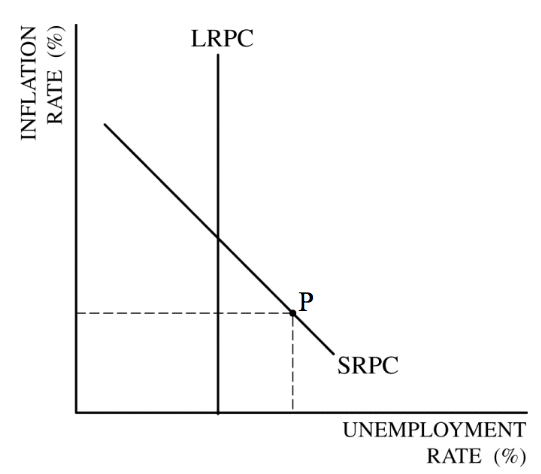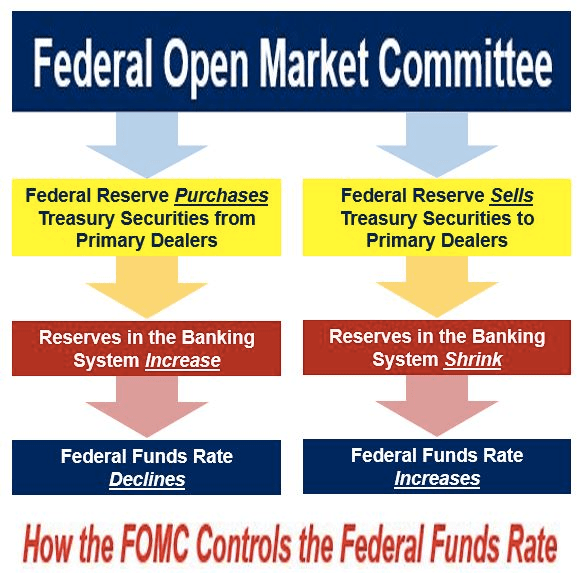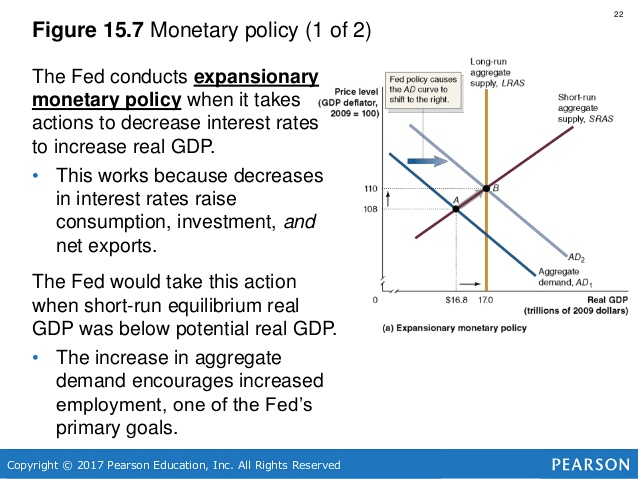Question 1 (a)
Phillips Curve
x-axis: unemployment rate
y-axis: inflation rate (Since inflation rate could be negative)
LRPC = NAIRU = Non-Accelerating Inflation Rate of Unemployment

Question 1 (d)
Open Market Operation and Federal Funds Rate
To Bloat the economy --> Buy bonds --> Increase in Money Supply --> Increase reserve --> Decrease Federal Funds Rate
To Shrink the economy --> Sell bonds --> Decrease in Money Supply --> Decrease reserve --> Increase Federal Funds Rate

Question 1 (e)
The effect of expansionary monetary policy on GDP


Question 1 (g)
The effect of change in interest rate on foreign exchange market

Question 2 (c)

If Mr. Smith deposits $100 in the bank and $10 is kept in reserves then $90 can be loaned out.
If that $90 is deposited in another bank then 10% of the $90 or $9 must be kept in reserve and therefore $81 can then be loaned out in the next round and 10% of that must be kept in reserve and so on and so on and so on. Until all is loaned out.
Question 2 (d)
- The original $100 was already part of the money supply so you can't include that in the calculation.